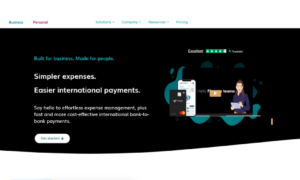A smooth onboarding process is crucial for building a positive employee experience and maximizing productivity from day one. In this blog post, we will explore the significance of effective employee onboarding, why it is particularly important during the first 90 days and key strategies to ensure a successful onboarding experience.
Why Employee Onboarding Matters
Employee onboarding refers to the process of integrating new hires into an organization. It goes beyond paperwork and orientation sessions; a well-designed onboarding program helps new employees feel welcomed, engaged, and equipped to carry out their responsibilities effectively. By investing significantly in onboarding new employees, companies can reap long-term benefits such as higher retention rates, increased job satisfaction, and improved employee performance.
The First 90 Days
The first three months are a critical period for new employees. During this time frame, they form initial impressions of the company’s culture, establish relationships with colleagues and supervisors, and gain crucial knowledge about their roles and responsibilities. A study by Bersin found that organizations with a strong onboarding process experience 2.5 times greater revenue growth than those without one. To make the most of these first 90 days, it is essential to employ effective strategies:
1. Pre-Boarding
Prior to an employee’s start date, consider implementing pre-boarding activities to establish communication and set expectations early. This can involve sending welcome emails or packages that provide information about company values, culture, upcoming team events or training opportunities.
2. Comprehensive Orientation
Orientation programs should take place during an employee’s first day or week in order to introduce them to their work environment and familiarize them with company policies and procedures. This is also an opportunity for new hires to meet key individuals within the organization who will play vital roles in their transition.
3. Mentorship Programs
Establishing a mentorship program where experienced employees serve as guidance for new hires has proven beneficial in numerous ways. Mentors provide invaluable support, offer insights, and act as a go-to resource for questions or concerns. This peer-to-peer relationship not only accelerates a new hire’s learning curve but also fosters a sense of belonging and integration within the organization.
4. Challenging Assignments
Providing new employees with challenging assignments or projects early on shows confidence in their abilities and allows them to demonstrate their skills. Such assignments help accelerate their acclimation to the role and foster a sense of empowerment and achievement. Consider balancing these projects with sufficient guidance and coaching to ensure support without overwhelming new hires.
5. Continuous Feedback
Regular feedback is crucial for an employee’s growth and development. It is important to establish a feedback loop right from the start, providing constructive and compassionate feedback as well as recognizing achievements. This not only helps identify areas for improvement but also reinforces positive behavior, fueling motivation, engagement, and dedication.
6. Ongoing Training and Development
A commitment to ongoing training and development is vital for keeping employees engaged and enhancing their job performance over time. Consider implementing regular workshops, opportunities for professional growth, cross-training programs, or online learning platforms to empower employees to continuously improve their skills.
7. Building a Strong Company Culture
A crucial element of successful onboarding is creating a strong company culture that fosters employee engagement and retention. Organizations need to communicate their values, goals, and expectations clearly from day one. By integrating new hires into the existing company culture, either through buddy systems or team-building activities, they quickly become familiar with the organization’s identity and sense of belonging.
8. Tailoring Onboarding to Individuals
No two employees are exactly alike, which is why it’s essential to tailor the onboarding process to meet individual needs. Different individuals may have varying levels of experience or different learning styles that must be taken into account. Customizing onboarding ensures that each new hire has the support necessary to succeed in their specific role and promotes overall growth within the organization.
Conclusion
A successful employee onboarding process sets the stage for long-term success within an organization. By creating an engaging experience during the first 90 days of employment, companies can nurture talented individuals who will contribute positively towards overall growth and productivity. Effective onboarding acknowledges that employees are valuable assets from day one and supports them in achieving their full potential through continuous learning opportunities, mentorship programs, challenging assignments, ongoing feedback loops, and comprehensive orientation programs based on shared organizational values – all reflective of a strong company culture committed to employee excellence.

































